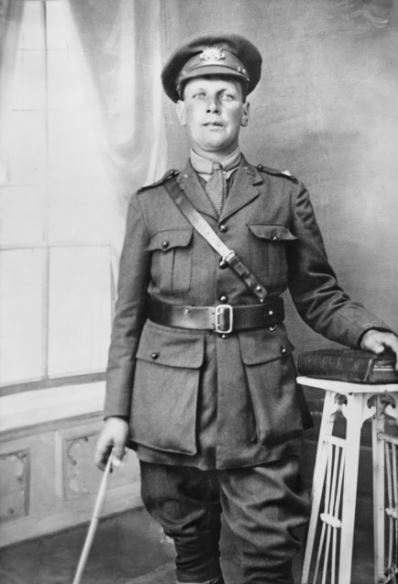Corporal John Alexander 'Jack' French VC (1914 - 1942, 28yo)
 John Alexander French was born in the small Queensland town of Crows Nest, near Toowoomba on 15 July 1914. He enlisted in the Australian Imperial Force on 22 October 1939 and was assigned to the newly formed 2nd/9th Battalion at Redbank.
John Alexander French was born in the small Queensland town of Crows Nest, near Toowoomba on 15 July 1914. He enlisted in the Australian Imperial Force on 22 October 1939 and was assigned to the newly formed 2nd/9th Battalion at Redbank.
In May 1940, French departed Sydney and spent several months stationed in Britain before being deployed to the Middle East in December. The following March, he took part in the assault on the Italian-held stronghold at Giarabub in Libya. From April to August 1941, the 2nd/9th Battalion played a role in the defence of Tobruk before moving to Syria for garrison duties. French quickly established himself as a capable and dependable soldier. He was promoted to acting Corporal in December, and his commanding officer, Lieutenant Colonel C. J. Cummings, recognised his leadership potential and regarded him as a likely candidate for a commission.
The battalion returned to Australia in early 1942 and was deployed to Papua by mid-year. By August, they had taken up positions at Milne Bay, where a Japanese landing force came ashore on 26 August. On 2 September, the battalion advanced east from K.B. Mission, and the following day pressed toward the Goroni River. French, serving in 'B' Company, crossed the river on 4 September as part of a flanking attack on entrenched Japanese positions.
During the assault, French’s section came under intense fire from three enemy machine-gun posts. Ordering his men to stay low, he advanced alone and destroyed the first post using grenades. He then returned for more grenades, took out the second post, and pressed forward with a Thompson sub-machine gun to silence the third. Despite sustaining serious wounds, he succeeded in eliminating the final position before collapsing and dying on the spot. His actions directly enabled the advance to continue and prevented further casualties among his comrades.
For his extraordinary bravery, French was posthumously awarded the Victoria Cross. He was laid to rest in Port Moresby (Bomana) War Cemetery.
Lieutenant Alfred Gaby VC (1892 - 1918, 26yo)
 Alfred Edward Gaby was born in the rural Tasmanian community of Springfield, near Ringarooma on 25 January 1892. While working on his family's farm, he joined the local militia and served for three years with the 12th Infantry Battalion (Launceston Regiment). In the years leading up to World War I, Gaby relocated to Western Australia, following one of his brothers, and found work as a labourer in Katanning.
Alfred Edward Gaby was born in the rural Tasmanian community of Springfield, near Ringarooma on 25 January 1892. While working on his family's farm, he joined the local militia and served for three years with the 12th Infantry Battalion (Launceston Regiment). In the years leading up to World War I, Gaby relocated to Western Australia, following one of his brothers, and found work as a labourer in Katanning.
Despite being rejected twice for military service, Gaby was finally accepted into the Australian Imperial Force on 6 January 1916, enlisting as a Private. He trained at Blackboy Hill camp and was assigned to the 10th reinforcements of the 28th Battalion. Thanks to his prior militia experience, he was rapidly promoted—from Lance Corporal in August to Sergeant by the end of December. On 7 April 1917, he was commissioned as a Second Lieutenant and promoted to Lieutenant later that year. He was wounded in action on 29 October 1917 when he was exposed to gas.
During the Allied offensive that began on 8 August 1918, Gaby was serving as acting commander of 'D' Company in the 28th Battalion, part of the 2nd Division. In the attack on German defences east of Villers-Bretonneux, his company was stalled by barbed wire. Gaby located a gap and, acting alone, advanced under heavy fire toward an enemy strongpoint. Sprinting along the enemy parapet and firing his revolver at close range, he drove out the defenders, capturing fifty soldiers and four machine-guns. He then reorganised his men and secured the objective.
Three days later, on 11 August, during another attack near Lihons, Gaby once again demonstrated exceptional courage, engaging an enemy machine-gun position. This time, he was fatally struck by sniper fire. The 28th Battalion’s war diary paid particular tribute to his leadership and valour.
Alfred Gaby was posthumously awarded the Victoria Cross for his actions. He is buried at Heath Cemetery in Harbonnières, France.
Last Reviewed 06/2025









